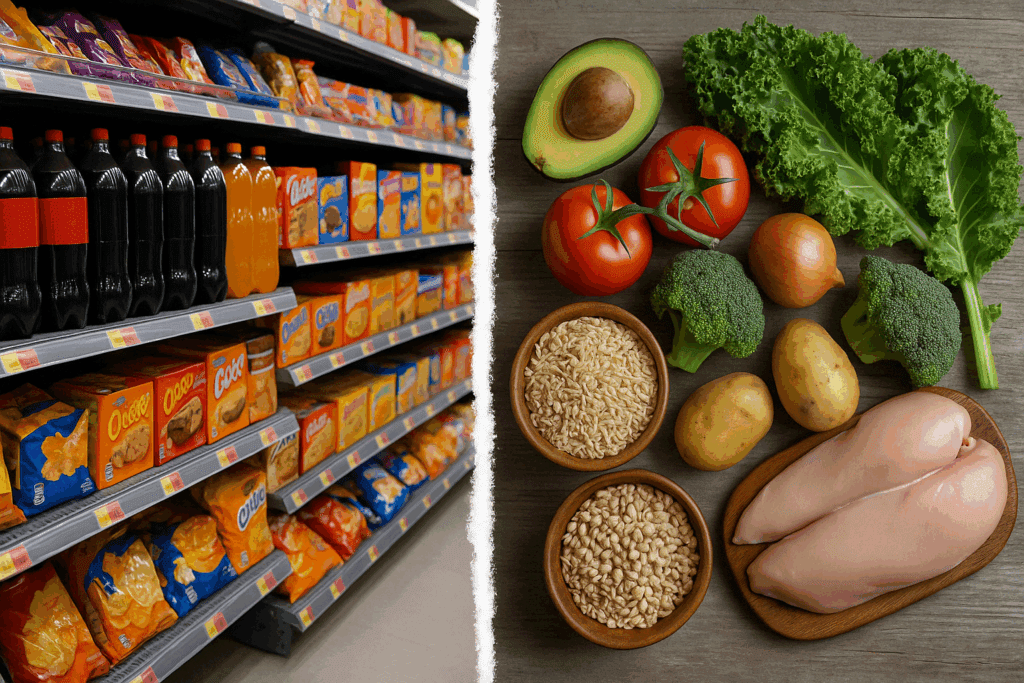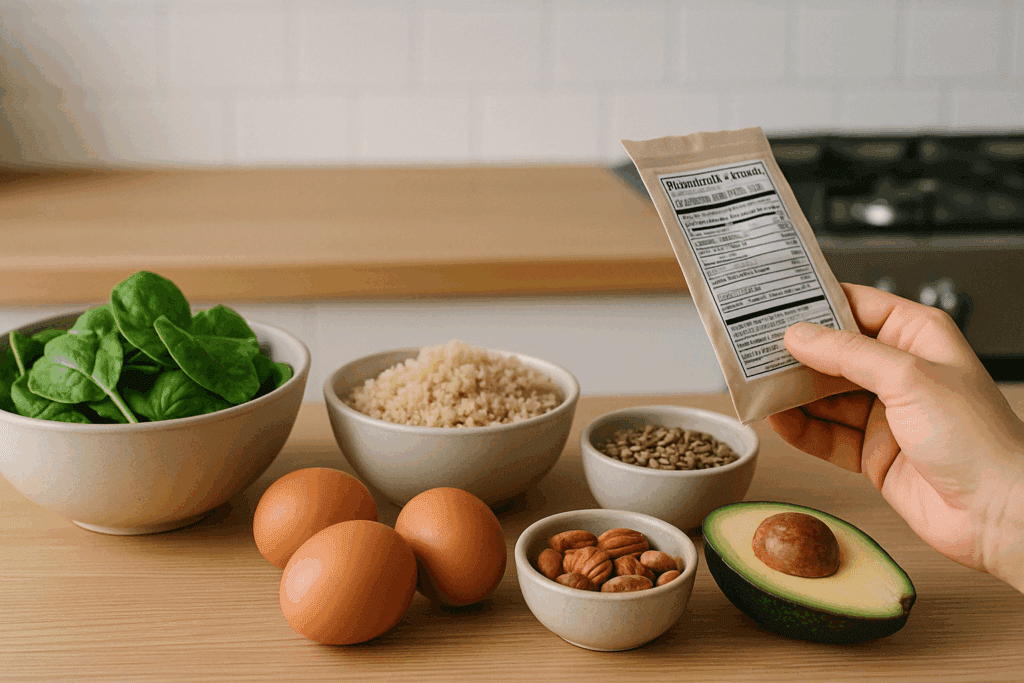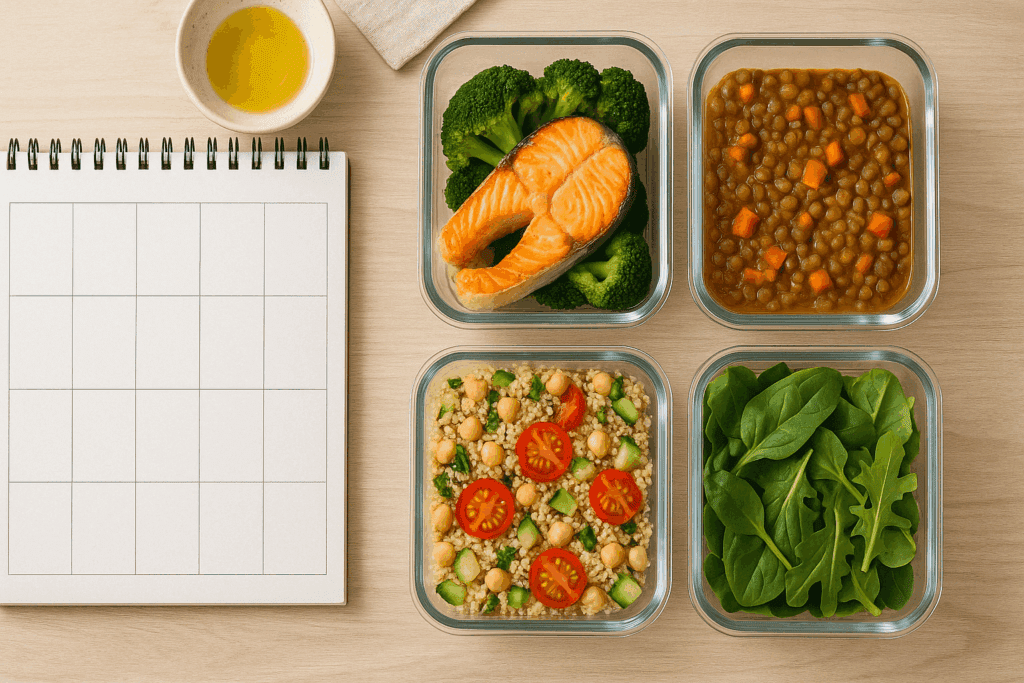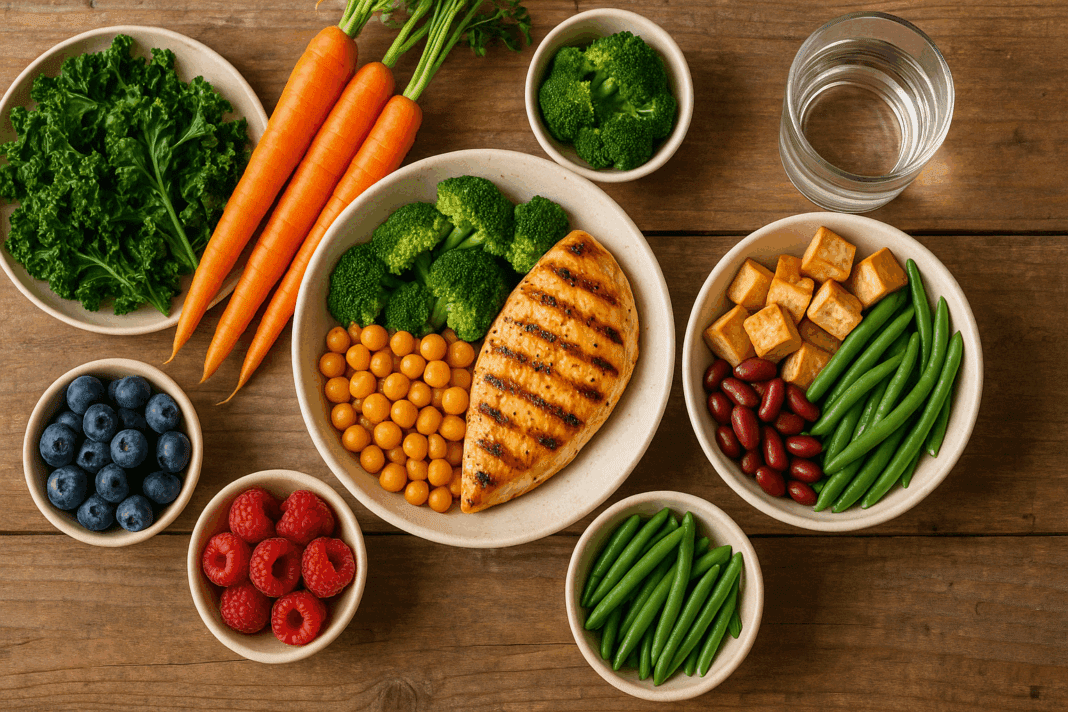In a world where sugar lurks in everything from salad dressings to seemingly healthy granola bars, cutting it out completely might seem overwhelming. Yet for many people looking to improve metabolic health, reduce inflammation, manage blood sugar, or simply eat cleaner, eliminating added sugar can be a life-changing commitment. Whether you’re curious about the zero sugar diet, embarking on a 19 day no sugar challenge, or seeking a practical no sugar meal plan, this guide will walk you through the science, strategy, and sustenance required to thrive sugar-free—without compromising flavor or nutrition.
Contrary to popular belief, giving up sugar doesn’t mean depriving yourself of delicious meals or essential nutrients. With the right mindset and the right tools, including a well-researched list of sugar free foods and an adaptable no sugar challenge food list, you can support a healthier lifestyle built on sustainable, satisfying eating habits. This article, grounded in expert-backed nutritional principles, explores how to eat for energy, longevity, and wellness—without a single gram of added sugar.
You may also like: Why Am I Craving Sweets All of a Sudden? Expert-Backed Reasons and How to Stop Sugar Cravings Naturally

The Growing Concern with Added Sugars
Health experts have long warned that excess sugar intake is linked to a cascade of chronic conditions. From type 2 diabetes and obesity to heart disease and cognitive decline, sugar’s impact on the body is anything but sweet. The American Heart Association recommends no more than 25 grams of added sugar per day for women and 36 grams for men, but most people exceed that by a considerable margin—often without realizing it. Even foods labeled as “healthy” or “natural” can contain hidden sugars under aliases like maltodextrin, cane syrup, or agave nectar.
This widespread overconsumption of sugar has fueled interest in plans like the zero sugar diet, which emphasizes whole, unprocessed foods and excludes all forms of added sugar. For those who find the idea of cutting sugar cold turkey daunting, time-bound approaches like a 19 day no sugar challenge offer a manageable entry point. These structured plans not only help reset taste preferences but also give the body a much-needed break from constant blood sugar fluctuations.
Why a No Sugar Meal Plan Works for Health
The benefits of reducing sugar go beyond the visible changes in waistlines or energy levels. At the biochemical level, lowering sugar intake helps regulate insulin sensitivity, reduce triglycerides, improve lipid profiles, and even decrease the risk of fatty liver disease. For people managing conditions like prediabetes or PCOS, a no sugar meal plan can serve as a critical tool in stabilizing hormones and blood glucose.
Additionally, reducing sugar can positively affect mood and mental clarity. Studies have found that high-sugar diets may contribute to symptoms of depression, anxiety, and brain fog. Many people report feeling more emotionally stable and cognitively sharp after just one or two weeks of removing added sugars.
A thoughtful plan that incorporates zero sugar foods—those with no added sugars and naturally low glycemic impact—can make a major difference. From leafy greens and legumes to nuts, seeds, and lean proteins, these foods fuel the body without triggering the metabolic rollercoaster that sugar often sets in motion.

Understanding the Zero Sugar Diet and Its Principles
At its core, the zero sugar diet is about eating whole foods in their most natural state. It excludes not only table sugar but also high-fructose corn syrup, honey, maple syrup, and artificial sweeteners like aspartame or sucralose, which may still stimulate sugar cravings. The emphasis is on balance—incorporating healthy fats, fiber-rich carbohydrates, and ample protein while ensuring meals are satisfying and nutritionally complete.
One of the most important steps in transitioning to this style of eating is becoming familiar with a zero sugar foods list. This resource serves as a guide for grocery shopping, meal planning, and label reading. When in doubt, it’s best to choose foods that don’t come with labels at all—think vegetables, legumes, and whole grains in their raw or minimally processed form.
The no sugar no philosophy doesn’t mean you can’t enjoy sweet flavors. Rather, it encourages you to retrain your palate to appreciate the natural sweetness found in foods like berries, cinnamon, or roasted carrots. Over time, the taste buds become more sensitive to subtle flavors, reducing the need for excessive sweetness and making meals more satisfying.

Building a Realistic 19 Day No Sugar Challenge
For those not ready to commit to lifelong sugar abstinence, the 19 day no sugar challenge offers a powerful introduction. This three-week plan allows you to test the waters, observe how your body responds, and establish healthier eating habits in a structured yet flexible way. While the number 19 may seem arbitrary, it provides just enough time to reset physical cravings and rewire mental associations with sugar-laden foods.
During the challenge, participants are encouraged to eat from a curated no sugar challenge food list featuring high-quality, unprocessed ingredients. These include cruciferous vegetables, whole grains like quinoa and farro, fresh fruits in moderation, and animal or plant-based proteins. Meals should be built around these elements, with plenty of herbs and spices to enhance flavor.
Some people find the first few days of the challenge difficult, especially if they previously consumed a high-sugar diet. Withdrawal symptoms like headaches, fatigue, or irritability are common—but temporary. By the end of the second week, many report increased energy, better sleep, and fewer food cravings. The 19 day no sugar challenge often becomes a springboard to a longer-term lifestyle shift once participants experience the tangible benefits.

Zero Sugar Foods That Support Full-Body Wellness
A central piece of any sugar-free plan is knowing which zero sugar foods to rely on regularly. These foods don’t just help you avoid added sugars—they actively support the body’s vital functions. Think of them as foundational ingredients that nourish you from the inside out.
Vegetables are, without question, the backbone of any sugar-free meal plan. Cruciferous veggies like broccoli, cauliflower, kale, and Brussels sprouts contain powerful phytonutrients that aid in liver detoxification and hormone regulation. Leafy greens are rich in folate, vitamin K, and fiber, helping to stabilize blood sugar and reduce inflammation.
Legumes such as lentils, chickpeas, and black beans are often featured on a list of sugar free foods because they provide sustained energy, plant-based protein, and a slow-burning carbohydrate source that won’t spike glucose levels. Similarly, nuts and seeds offer healthy fats and minerals, promoting cardiovascular and cognitive health.
When it comes to fruit, some people fear all sugar must be avoided, but naturally occurring sugars in whole fruits behave differently in the body than added sugars. Berries, in particular, have a low glycemic load and are packed with antioxidants. Including them in moderation during your no sugar meal plan adds variety, flavor, and important micronutrients without undermining your goals.

Navigating the Grocery Store with a No Sugar Mindset
Learning to grocery shop through a sugar-free lens can be one of the most eye-opening aspects of starting a zero sugar diet. Even seemingly innocent items like peanut butter, tomato sauce, and oat milk may contain several grams of added sugar per serving. That’s where having a detailed zero sugar foods list comes in handy.
The perimeter of the store—where fresh produce, meats, and dairy products are typically located—is your best friend. Center aisles tend to be packed with processed goods, many of which rely on sugar for taste or shelf life. Always read ingredient labels closely, and be wary of “sugar-free” claims that use alternative sweeteners which may not align with your health goals.
As you build meals, focus on nutrient-dense options that provide satiety and variety. For example, a salad made with arugula, avocado, walnuts, lentils, and tahini dressing can be both flavorful and completely free of added sugar. Dishes like baked salmon with roasted asparagus or stir-fried tofu with cabbage and mushrooms fit perfectly within the framework of a no sugar challenge food list.
Shopping with intention helps you avoid temptation and ensures your kitchen is stocked with items that support the goals of the 19 day no sugar challenge or any longer-term meal plan you follow.
The Psychology of Cutting Sugar and Reclaiming Taste
An often-overlooked aspect of removing sugar from the diet is the psychological shift it demands. Sugar isn’t just physically addictive; it’s emotionally comforting. Many people use sweets as a reward, a form of stress relief, or even a way to punctuate the day. These habits are deeply ingrained and can be difficult to break.
Yet when you choose 0 sugar foods consistently, something remarkable happens—your taste buds recalibrate, and your brain begins to associate satisfaction with stability, not sugar highs. This process usually begins within the first week of a no sugar meal plan, with noticeable changes by the end of the 19 day no sugar challenge.
It’s also helpful to create rituals that replace emotional eating. Enjoying a warm cup of herbal tea after dinner, going for a walk instead of reaching for dessert, or practicing mindful breathing when cravings strike can support your long-term success. The no sugar no lifestyle isn’t about denial—it’s about learning what genuinely nourishes and fulfills you, both physically and mentally.

How to Sustain a No Sugar Lifestyle Long-Term
Once you’ve completed a challenge or successfully adopted a no sugar meal plan, the next hurdle is maintaining the progress. The good news is that by this stage, many people have internalized new habits and no longer crave sugar the way they once did. But that doesn’t mean temptations disappear. Holidays, social events, and stress can trigger old behaviors if you’re not prepared.
Sustainable sugar-free living depends on preparation and mindset. Continue to plan meals in advance, keep your pantry stocked with approved items from your list of sugar free foods, and find enjoyable replacements for your former go-to treats. Dark chocolate with no added sugar, frozen banana “nice cream,” or baked apples with cinnamon can provide a sweet experience without sabotaging your progress.
Flexibility also plays a role in long-term adherence. Some people adopt an 80/20 approach, where 80% of meals are strictly sugar-free, and 20% allow for mindful indulgences. Others find that complete abstinence works best. Either way, the core principles of the zero sugar diet remain the same: minimize added sugars, focus on whole foods, and prioritize nutrition that fuels both body and mind.
Frequently Asked Questions: No Sugar Meal Plans and the Zero Sugar Diet
1. Can I include fruit in a no sugar meal plan without compromising results?
Yes, fruit can absolutely be part of a healthy, balanced no sugar meal plan when chosen thoughtfully and consumed in moderation. The key is to differentiate between added sugars and naturally occurring sugars in whole foods. While zero sugar foods technically exclude any food with naturally present sugars, many no sugar challenge food list variations allow for low-glycemic fruits like berries, green apples, and kiwi. These fruits provide essential vitamins, fiber, and antioxidants that support metabolic health. If you’re following a stricter version of the zero sugar diet, you might eliminate fruit entirely for a few weeks, but gradually reintroducing it in measured portions is often recommended for long-term sustainability.
2. What are some lesser-known 0 sugar foods that add variety to meals?
Beyond the usual vegetables, lean proteins, and legumes, there are several 0 sugar foods that can bring excitement to a sugar-free diet. Seaweed, for example, is a mineral-rich, umami-packed option that works well in soups and salads. Fermented vegetables like kimchi or sauerkraut offer gut health benefits and natural flavor complexity while fitting neatly within the zero sugar foods list. Shirataki noodles, made from konjac root, are virtually calorie- and sugar-free, making them a unique low-carb pasta alternative. Incorporating these options into your no sugar meal plan helps break monotony and supports diverse nutrient intake.
3. How can I stick to the 19 day no sugar challenge during travel or busy schedules?
Maintaining a 19 day no sugar challenge while on the go requires strategic planning and adaptable habits. One useful approach is to prepare portable meals with ingredients from your personalized no sugar challenge food list, such as hard-boiled eggs, pre-cut veggies, or unsweetened nut butters paired with flaxseed crackers. When dining out, request simple dishes like grilled proteins with steamed vegetables and ask for sauces or dressings on the side, as they often contain hidden sugars. Carrying a printed or digital list of sugar free foods also helps you make informed decisions in unfamiliar settings. Over time, your ability to spot zero sugar foods at a glance will improve, reducing the mental load.
4. Does the no sugar no approach support athletic performance and recovery?
Contrary to popular belief, many athletes can thrive on a no sugar no nutrition framework. By focusing on whole carbohydrates like legumes, quinoa, and sweet potatoes, you can maintain glycogen levels without relying on quick-digesting sugars. Recovery is supported by high-quality protein sources and anti-inflammatory fats found in nuts, seeds, and olive oil—all of which are staple items on most zero sugar foods lists. Some athletes even report improved endurance and fewer energy crashes after switching to a no sugar meal plan. However, endurance athletes may choose to reintroduce small, strategic amounts of fruit or natural starches post-training as needed, depending on intensity and personal tolerance.
5. What are the long-term psychological effects of following the zero sugar diet?
Over time, adherence to the zero sugar diet can positively reshape not only physical health but also psychological well-being. Many people experience greater emotional stability and reduced anxiety once they’re no longer riding the highs and lows of sugar-induced energy fluctuations. With consistent use of a no sugar challenge food list, individuals develop a more mindful relationship with food, often noticing decreased emotional eating and improved impulse control. The empowerment that comes from resisting sugar cravings translates into greater confidence and autonomy in other areas of life. These benefits make the 19 day no sugar challenge a gateway not only to metabolic health but also to mental resilience.
6. How does the gut microbiome respond to a no sugar meal plan?
Eliminating added sugars from your diet can significantly enhance gut health. Sugary diets often promote the overgrowth of harmful bacteria like Candida albicans, while a no sugar meal plan shifts the microbial balance toward beneficial species. Foods that support this shift, such as fermented vegetables and fiber-rich legumes from your list of sugar free foods, help populate the gut with short-chain fatty acid–producing bacteria. These compounds improve intestinal barrier function and reduce inflammation. Including diverse 0 sugar foods ensures that your microbiome receives prebiotics necessary for thriving long-term health, adding another compelling reason to commit to the zero sugar diet beyond surface-level benefits.
7. Can kids and teens safely follow a zero sugar foods list?
While growing children have different nutritional needs than adults, they can still benefit from reduced sugar intake when the focus is on real, unprocessed foods. Implementing a modified zero sugar foods list that includes plenty of complex carbohydrates, healthy fats, and lean proteins can support stable energy, better focus, and emotional regulation in kids and teens. The key is to avoid making the no sugar no approach feel overly restrictive or punitive. Involving children in selecting recipes or preparing meals from a no sugar challenge food list can empower them with healthy habits for life. Pediatric dietitians often recommend focusing on naturally sweet whole foods like roasted root vegetables to satisfy young palates without derailing nutrition.
8. How do I manage social events and cravings while following the 19 day no sugar challenge?
Navigating social situations can be one of the biggest hurdles during the 19 day no sugar challenge, but it’s entirely manageable with preparation. One strategy is to eat before events so you arrive satisfied and less susceptible to sugary temptations. If attending potlucks or family dinners, consider bringing a dish made entirely from items on your no sugar challenge food list to ensure you have at least one compliant option. Cravings can also be redirected with herbal teas, a handful of almonds, or a brisk walk to shift your focus. Having visual reminders of your progress—such as a printed zero sugar foods list on the fridge—can reinforce your motivation when willpower is tested.
9. Are there any signs I should watch for if I’m cutting sugar too aggressively?
While most people tolerate sugar elimination well, some individuals may experience signs that they’ve transitioned too quickly or need to rebalance their meals. Symptoms like dizziness, irritability, or extreme fatigue can indicate insufficient caloric intake or a lack of complex carbohydrates. These issues can often be resolved by revisiting your no sugar meal plan and ensuring it includes adequate fiber and slow-digesting starches such as lentils or steel-cut oats. It’s also critical to avoid over-restricting and to use a diverse list of sugar free foods that supports blood sugar stability. If symptoms persist, consulting a dietitian experienced in the zero sugar diet can help identify and correct any deficiencies or imbalances.
10. What innovations are emerging in zero sugar foods and product development?
As demand for zero sugar foods continues to rise, the food industry is responding with innovative formulations that cater to health-conscious consumers. Advances in natural sweetener technology have introduced options like allulose and monk fruit that offer sweetness without blood sugar spikes, though these are often debated within stricter versions of the zero sugar diet. In addition, startups are creating high-fiber snacks, protein bars, and condiments that align with most versions of a no sugar challenge food list, expanding variety and convenience for busy individuals. The development of smart grocery apps that automatically sort items by a customizable zero sugar foods list is another promising trend, making it easier to maintain sugar-free eating even with limited time. As awareness grows, the accessibility of 0 sugar foods will likely increase, making healthy eating more intuitive and inclusive for a wide range of dietary preferences.
Conclusion: Nourish Fully with the Zero Sugar Diet and a Sustainable No Sugar Meal Plan
Embracing a no sugar meal plan is more than a dietary shift—it’s a powerful act of reclaiming control over your health, energy, and emotional well-being. As this comprehensive guide has shown, thriving without added sugar is entirely possible with the right knowledge, mindset, and tools. Armed with a practical zero sugar foods list, a thoughtfully structured 19 day no sugar challenge, and a clear understanding of what the zero sugar diet entails, you can craft a way of eating that aligns with your long-term goals and daily lifestyle.
Whether you’re starting out with a detailed no sugar challenge food list, experimenting with 0 sugar foods, or seeking to deepen your commitment to the no sugar no approach, the key is consistency—not perfection. Each sugar-free meal builds resilience in the body, clarity in the mind, and confidence in your choices. By filling your plate with foods that heal rather than harm, you’re not just avoiding sugar; you’re embracing full-spectrum nutrition.
Ultimately, the most powerful change isn’t just what’s missing from your meals—but what’s finally being added in: vitality, balance, and a deeper connection to the food that truly sustains you.
Was this article helpful? Don’t let it stop with you. Share it right now with someone who needs to see it—whether it’s a friend, a colleague, or your whole network. And if staying ahead on this topic matters to you, subscribe to this publication for the most up-to-date information. You’ll get the latest insights delivered straight to you—no searching, no missing out.
Further Reading:
No Sugar Diet Plan: 14-Days to a Healthier You
No-Sugar Diet Plan, Created by a Dietitian
14 Day No Sugar Diet with Food List: A Dietitian’s Guide
Disclaimer
The information contained in this article is provided for general informational purposes only and is not intended to serve as medical, legal, or professional advice. While NewsHealthWatch strives to present accurate, up-to-date, and reliable content, no warranty or guarantee, expressed or implied, is made regarding the completeness, accuracy, or adequacy of the information provided. Readers are strongly advised to seek the guidance of a qualified healthcare provider or other relevant professionals before acting on any information contained in this article. NewsHealthWatch, its authors, editors, and contributors expressly disclaim any liability for any damages, losses, or consequences arising directly or indirectly from the use, interpretation, or reliance on any information presented herein. The views and opinions expressed in this article are those of the author(s) and do not necessarily reflect the official policies or positions of NewsHealthWatch.

